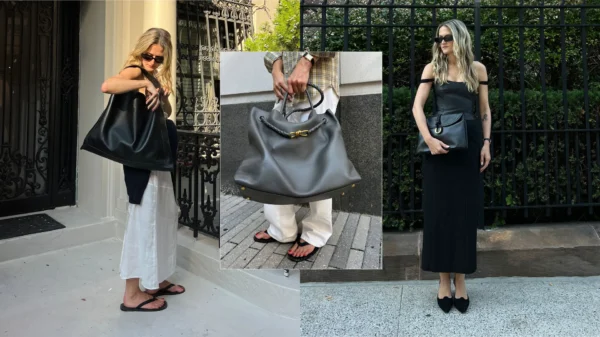Focus on Photoaging Prevention: A New Priority in Modern Skincare
As consumer awareness around sun damage grows, the skincare industry has seen a significant shift toward photoaging prevention. No longer seen as a seasonal concern, protecting the skin from the harmful effects of UV radiation has become a year-round commitment. From high-SPF sunscreens to antioxidant-packed serums, modern skincare routines are prioritizing defense against sun-induced premature aging.
What Is Photoaging?
Photoaging refers to the premature aging of the skin caused by prolonged exposure to ultraviolet (UV) radiation. Unlike natural aging, which results from internal biological processes, photoaging is triggered by environmental factors—most notably, the sun. Common signs include fine lines, wrinkles, hyperpigmentation, uneven texture, and sagging skin.
The Science Behind UV-Induced Skin Damage
UV rays, particularly UVA and UVB, penetrate the skin and disrupt collagen and elastin fibers, leading to a breakdown in skin structure. Over time, this exposure accelerates visible aging. UVA rays, which penetrate deeper, are responsible for long-term damage, while UVB rays primarily cause sunburns. Both types contribute to photoaging and increase the risk of skin cancer.
Why Prevention Matters More Than Ever
Preventing photoaging is not just about aesthetics—it’s also a matter of long-term skin health. As studies continue to reveal the cumulative and irreversible effects of UV exposure, dermatologists are stressing the importance of starting sun protection early. Even minimal, daily exposure can lead to visible damage over time, making prevention essential at every age.
High-SPF Sunscreens Take Center Stage
A cornerstone of any photoaging prevention routine is a broad-spectrum sunscreen with SPF 30 or higher. These products protect against both UVA and UVB rays and are now available in lightweight, non-comedogenic, and tinted formulations that suit all skin types and tones. The emphasis is not just on SPF level but on consistent daily application.
Mineral vs. Chemical Sunscreens: What to Choose
Modern skincare offers two main types of sunscreens: mineral (physical) and chemical. Mineral sunscreens, containing zinc oxide or titanium dioxide, sit on the skin’s surface and reflect UV rays, making them ideal for sensitive skin and immediate protection. Chemical sunscreens absorb into the skin and neutralize UV rays but may take time to activate. Each has unique benefits depending on lifestyle and skin concerns.
Antioxidants as a Powerful Second Line of Defense
In addition to SPF, antioxidants like vitamin C, vitamin E, niacinamide, and green tea extract have become essential in photoaging prevention. These ingredients neutralize free radicals caused by UV exposure, reducing oxidative stress and inflammation. When layered under sunscreen, antioxidants enhance protection and improve skin resilience.
Retinoids for Skin Renewal and Repair
While SPF and antioxidants help prevent damage, retinoids play a critical role in reversing early signs of photoaging. These vitamin A derivatives accelerate cell turnover, stimulate collagen production, and help fade sunspots. Many dermatologists recommend introducing a gentle retinol into the routine for long-term anti-aging benefits.
Hydration to Support Skin Barrier Function
Sun exposure can compromise the skin’s barrier, leading to dryness and irritation. Moisturizers with hyaluronic acid, ceramides, and glycerin are now seen as vital in a photoaging prevention regimen. These ingredients keep the skin hydrated and fortified, allowing it to better withstand environmental stressors.
Smart Sun Behavior and Lifestyle Changes
Preventing photoaging extends beyond skincare products. Dermatologists recommend avoiding peak sun hours (10 a.m. to 4 p.m.), wearing wide-brimmed hats and UV-blocking sunglasses, and seeking shade whenever possible. These behaviors, combined with topical protection, dramatically reduce cumulative sun damage.
Makeup with Built-In Sun Protection
Beauty products are also evolving to meet the demand for photoaging prevention. Foundations, primers, and tinted moisturizers now often include SPF and antioxidant ingredients, making it easier for consumers to incorporate protection into their daily beauty routines without extra steps.
The Role of Professional Treatments
In-office treatments like chemical peels, microneedling, and fractional lasers are increasingly used to correct photoaging damage. These procedures target pigmentation, improve skin texture, and stimulate collagen remodeling, offering both corrective and preventive benefits.
Education Is Driving Prevention Forward
A major factor in the shift toward photoaging prevention is increased education and awareness. Through dermatologists, skincare influencers, and science-based beauty brands, consumers are learning that sun protection is a daily necessity, not a seasonal afterthought.
Inclusivity in Sun Protection Messaging
Brands are also working to dispel the myth that only fair skin needs sun protection. Photoaging affects all skin tones, even if the signs present differently. Inclusive marketing and shade-inclusive sunscreen formulations are helping to normalize SPF use across diverse communities.
Long-Term Benefits of Consistent Sun Care
The payoff for daily sun protection is significant. Consistent use of SPF and UV-defense skincare can delay signs of aging by years, reduce the risk of skin cancer, and maintain a smooth, even complexion well into the future. Prevention today truly shapes the skin of tomorrow.
Conclusion: Daily Sun Protection Is Non-Negotiable
Photoaging prevention is no longer just a dermatologist’s recommendation—it’s a skincare standard. By making sun protection a daily habit and embracing ingredients that combat UV damage, individuals can preserve their skin’s health, texture, and youthful appearance. In the era of proactive skincare, protecting against photoaging is not optional—it’s essential.



































